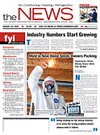
Dry Up Houses Before Sealing
[Editor’s note: This note is in response to the article “Mold in New Home Sends Owners Packing,” Aug. 20.]I am constantly amazed when I hear about mold problems in homes - especially new homes and only new homes - that it isn’t pointed out time and again, the biggest problem is that we have all forgotten why homebuilding, in the past, was always done in the dry months. There is such a push now to put up homes quickly and year-round; builders are sealing in saturated framing.
Here in the Northwest, we see building in the pouring winter rains. Builders run skimpy fans and heaters in one central area before putting up sheetrock and calling it good. The saturated houses don’t have a chance of drying out until late July. By then, the house is sealed up, with the new building standards of “tight houses” exacerbating the problems. The moisture has nowhere to go.
I’ve personally stopped and asked builders how they can do this, and they are amazed that I even have a concern. “We run driers,” they say. You can feel the moisture in the wood. You can smell it.
Time is money they say. Mold is money, too, just not out of their pockets. If builders were made 100 percent accountable, this situation would change immediately, and we’d go back to the standards of building that made sense.
L.P. Taylor
Tacoma, Wash.
Not the Real World
In the article “SEER Rating Challenged,” [July 23] ... while there is some area of discussion about fan wattage decreases by adding static in the system (depending on where the fan is operating on the fan curve) there is by his [Alan Kessler, vice president of R & D for Rheem Manufacturing] own admission, a decrease in the airflow which makes the unit run longer to satisfy the thermostat, hence more energy usage which was the point of the entire article.An external static of 0.15 is unrealistic for application, however most test standards are used to test unit-to-unit, not represent the “real world.”
Alan C. Veeck
Executive Director
National Air Filtration Association
Send correspondence via e-mail to letters@achrnews.com.
Publication date:09/03/2007